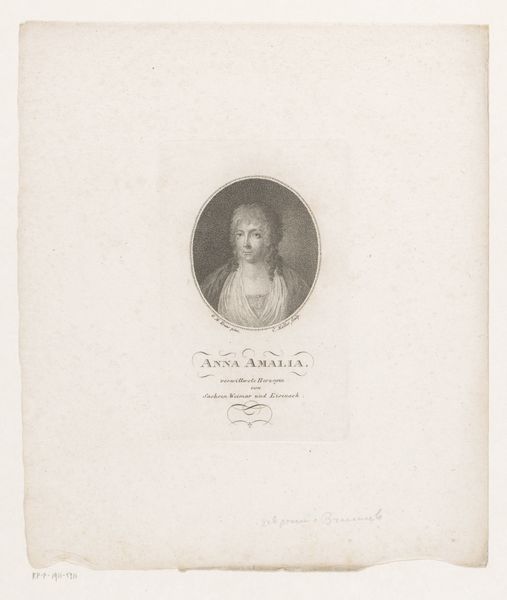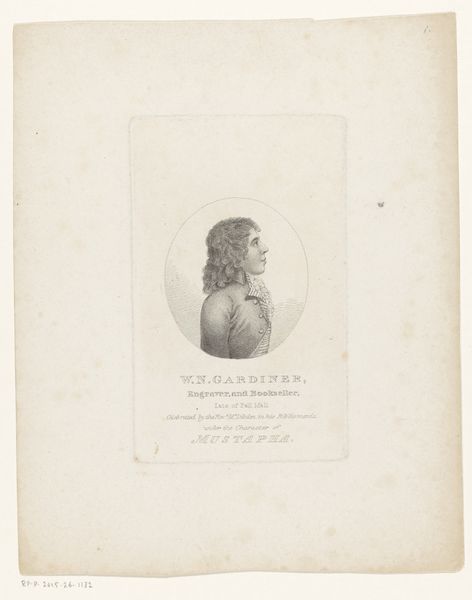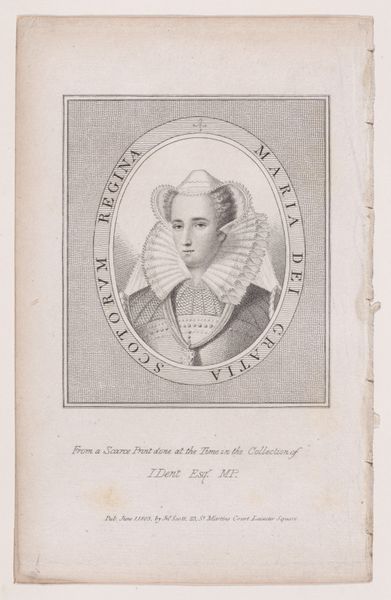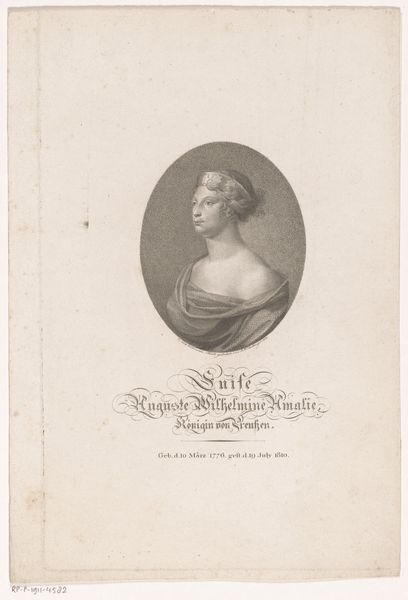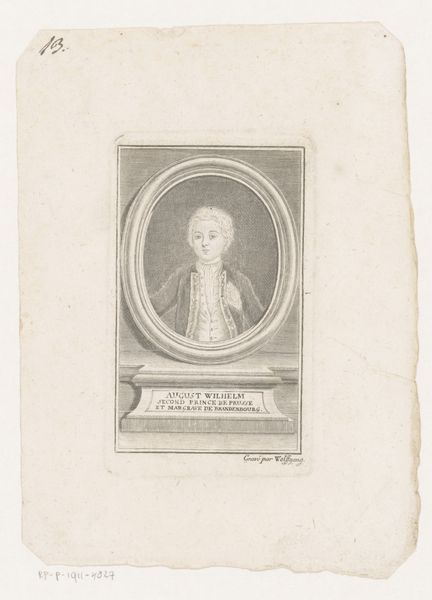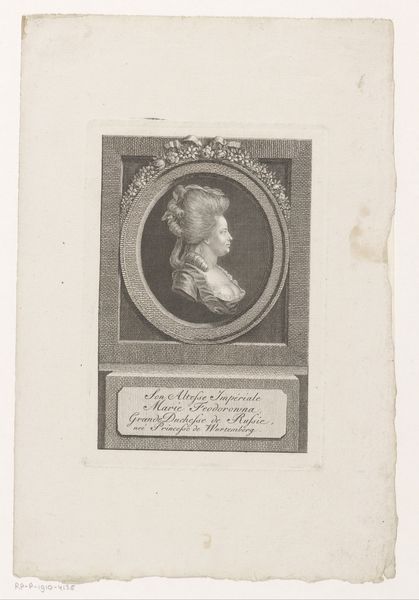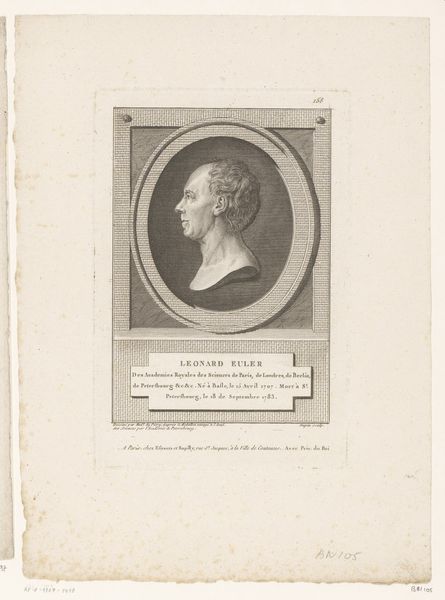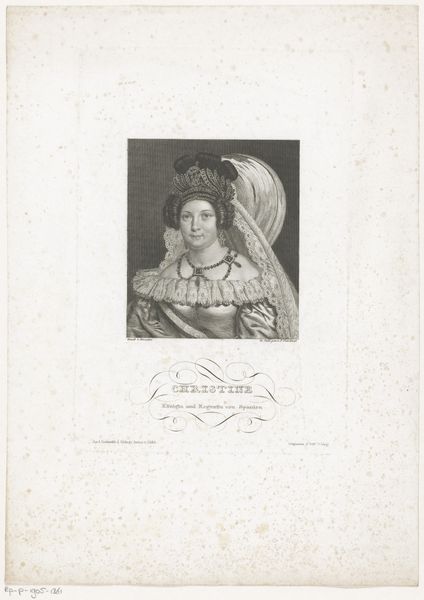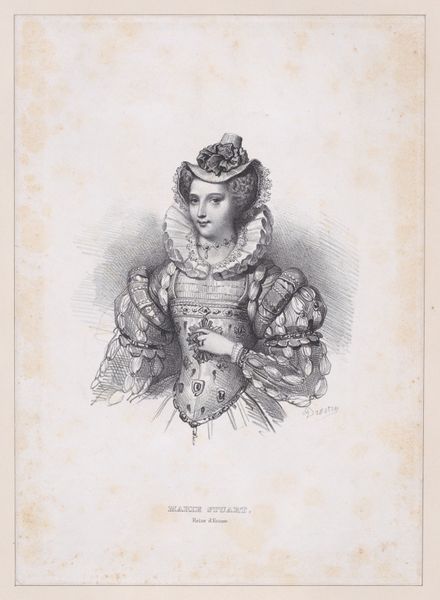
Mary, Queen of Scots (from "Select Biography: Containing Instructive and Entertaining Accounts of the Lives, Characters, and Actions of the Most Eminent Persons of All Ages and All Countries") 1800 - 1833
drawing, print, engraving
portrait
drawing
neoclacissism
engraving
Dimensions: Plate: 6 9/16 × 4 3/16 in. (16.6 × 10.7 cm) Sheet: 8 1/16 in. × 5 in. (20.4 × 12.7 cm)
Copyright: Public Domain
T. Clerk engraved this image of Mary, Queen of Scots for a biography, capturing her in the iconic fashion of her time. The ruff collar, a symbol of status and refinement, encircles her neck like a halo, drawing our eyes to her face. The ruff, however, is more than mere decoration; it is a cultural signifier with a complex history. Emerging in the 16th century, it evolved from a modest frill to an extravagant statement, reflecting the wearer's wealth and social standing. Think of the collars in Dutch portraits by masters like Rembrandt, where the ruff becomes almost a character in itself, dictating posture and presence. This act of adornment is psychologically intriguing; the ruff both elevates and imprisons, suggesting a tension between visibility and constraint. In Mary's case, the ruff accentuates her regal bearing but also hints at the restrictions placed upon her as a queen and a woman. Like a serpent eating its own tail, this evolution is cyclical, ever returning in new forms.
Comments
No comments
Be the first to comment and join the conversation on the ultimate creative platform.
